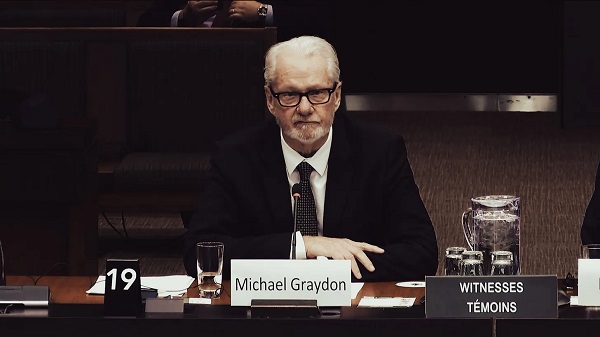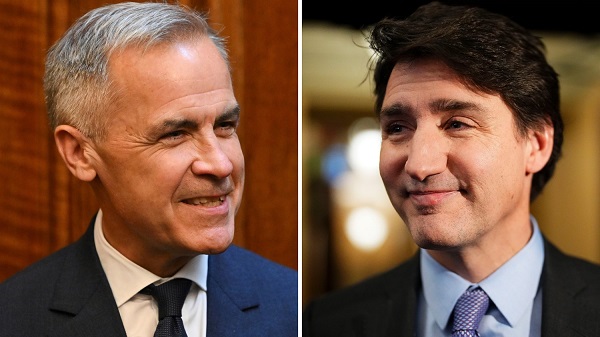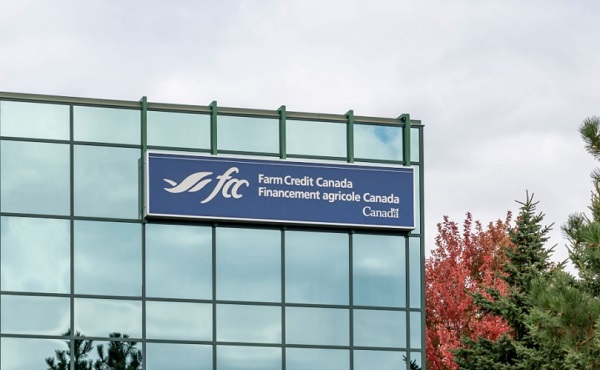Business
Business Spotlight – Calgary Entrepreneurs Bring The Gig Economy To Alberta

Gig work has been a popular subject as of late, interesting that younger generations of Albertans are up against a lot, including a historical economic downturn, a major decrease in unionized and salary jobs, competing with experienced furloughed workers and are simply left scratching their head after putting in thousands of hours and dollars to get a formal education. Combine that with an unemployment rate of 15.5% reported as of May 2020, up from 6.7% the same time last year, we are left with a pretty grim outlook for younger generations of Albertans.
What Is Gig Work?
Gig work can be referred to as self employed or simply contract, consulting or freelance work, where you as the service provider offer your skills at a preferred rate. This type of work is not new, but not only does it already consist of thousands of Canadian workers, Statistics Canada’s most recent data reported 1.7 million gig workers in Canada in 2016. Not the security we were taught to seek in our youth, but can offer a new level of freedom for those who wish to choose their work schedule, offer their skillset and grow their own personal brand.

Source: The Accelerator – From Left: CEO, Karshil Desai, CCO, Sara Mir, CSO, Shawn Moghaddami and CMO, Ankit Patel.
Incredible Minds Can Do Incredible Things
Meet the Skilli team, a group of four like minded entrepreneurs collaborating to bring the gig economy to Alberta. Having worked in Fort McMurray in Alberta, they experienced the extent of what ‘hard work’ means for our citizens while spending time working in the Alberta Oil and Gas industry. Respect to the many hard working individuals who have overcome fires and floods in that area over the last number of years, their community resilience is inspirational. CEO Karshil Desai speaks about witnessing an opportunity while living there that would prove to be the foundation for Skilli:
“…working in software and automation in the oil and gas sector in Fort MacMurray, I was around a lot of people who made good money offering their unique skills and services…due to the economic downturn, it was unfortunate to see so many people getting laid off, but still needed to pay their bills…I noticed a huge gap in how skilled services were offered and how they were hired by the consumer..”
Skilli is a mobile platform that provides freelancers, contractors and service providers a place to market themselves as their own brand. There can be many challenges with traditional methods of gig work, such as finding who can provide the service you need, getting their contact details, scheduling the service, quality control of the work and invoicing for payment after the fact. I am sure there has been millions of dollars spent from word of mouth referrals for what was actually a poor quality deliverable on too many occasions. Validation is a crucial part of the Skilli process for those offering their service, as part of that process, they put the service provider first, thus providing the highest level of customer satisfaction to the end user. CSO for Skilli, Shawn Moghaddami mentions:
“…we see the value of the gig economy in Alberta, with such a large talented workforce here…for us, it is ultimately about putting the service provider first so the customer is the one that benefits…we provide the tools they need, they have the platform behind them and the support to build their own brand.”
The Skilli App You Need To Watch Out For
Combining passion to help a wider community, their experience around contract work and their education on the gig economy, the team have developed their app where the platform can be utilized from anywhere. As mentioned, this type of self employment can offer a higher level of freedom than the traditional 40 hour nine-to-five. Work for yourself and lean on their knowledge base for resources on how to establish your profile, process payments, professional validation and build your confidence as a freelancer or contractor. Unfortunately the app is not available yet in Alberta, however they are proactively validating service providers for the launch of their newest version in early July. There is hope for those who can offer services and are having difficulty finding employment. Something we can all look forward to in these trying times.

Invest In Yourself
Want to be a part of what will be established as the ‘new economy’? Now is the time to re-evaluate the value you possess. Take a course, improve your skills, invest in supplies you need to offer a service as an individual or begin to construct a portfolio of previous work. Contract work has been around for a very long time, the stigma of it not being a successful career choice for your whole life is dying. Take control of your future by working for yourself. The gig economy is here and will continue to become a major part of what we call the ‘new normal’, to that point everyone here at Todayville wishes the Skilli team the best of success with the launch of their new app and look forward to their launch in early July.
Considering becoming a service provider or seeking information?
If you would like to learn more about Skilli or their new app. Visit their website here or social media links below.

For more stories, visit Todayville Calgary
Business
Nearly One-Quarter of Consumer-Goods Firms Preparing to Exit Canada, Industry CEO Warns Parliament

Standing Committee on Industry and Technology hears stark testimony that rising costs and stalled investment are pushing companies out of the Canadian market.
There’s a number that should stop this country cold: twenty-three percent. That is the share of companies in one of Canada’s essential manufacturing and consumer-goods sectors now preparing to withdraw products from the Canadian market or exit entirely within the next two years. And this wasn’t whispered at a business luncheon or buried in a consultancy memo. It was delivered straight to Parliament, at the House of Commons Standing Committee on Industry and Technology, during its study on Canada’s underlying productivity gaps and capital outflow.
Michael Graydon, the CEO of Food, Health & Consumer Products of Canada, didn’t hedge or soften the message. He told MPs, “23% of our members expect to exit products from the Canadian marketplace within the next two years, because the cost of doing business here has just become unsustainable.”
Unsustainable. That’s the word he used. And when the people who actually make things in this country start using that word, you should pay attention. These aren’t fringe players or hypothetical startups. These are firms that supply the goods Canadians buy every single day, and they’re looking at their balance sheets, their regulatory burdens, the delays in getting anything approved or built, and concluding that Canada simply doesn’t work for them anymore.
What makes this more troubling is the timing. Canada’s investment levels have been falling for years, even as the United States and other competitors race ahead. Businesses aren’t reinvesting in machinery or technology at the rate they once did. They’re not modernizing their operations here. They’re putting expansion plans on hold or shifting them to jurisdictions that move faster, cost less and offer clearer rules. That’s not ideology; it’s arithmetic. If it costs more to operate here, if it takes longer to get a permit, and if supply chains back up because ports and rail lines are jammed, investors will choose the place that doesn’t make growth a bureaucratic mountain climb.
Graydon raised another point that ought to concern anyone who cares about domestic production. Canada’s agrifood sector recorded a sixty-billion-dollar trade surplus last year, one of the brightest spots in the national economy, but according to him that potential is being “diluted by fragmented interprovincial trade and logistics bottlenecks.” The ports, the rail corridors, the entire transport network—choke points everywhere. And you can’t build a productive economy on choke points. Companies can’t scale, can’t guarantee delivery, can’t justify the costs. So they leave.
This twenty-three percent figure is the clearest evidence yet that the problem isn’t theoretical. It’s not something for think-tank panels or academic papers. It is happening at the level that matters most: the decision whether to continue doing business in Canada or move operations somewhere more predictable. And once those decisions are made, they’re very hard to reverse. Capital doesn’t boomerang back out of patriotism. It goes where it can earn a return.
For years, Canadian policymakers have talked about productivity as if it were a moral failing of workers or a mystical national characteristic. It’s neither. Productivity comes from investment—real money poured into equipment, technology, training and expansion. When investment stalls, productivity collapses. And when a quarter of firms in a major sector are already planning their exit, you are not looking at a temporary dip. You are looking at a structural rejection of the business environment itself.
The fact that executives are now openly warning Parliament that they cannot afford to stay is a moment of clarity. It is also a test. Either this country becomes a place where people can build things again—quickly, affordably, competitively—or it continues down the path that leads to empty factories, hollowed-out supply chains and consumers who wonder why the shelves look thinner every year.
Twenty-three percent is not just a statistic. It’s the sound of a warning bell ringing at full volume. The only question now is whether anyone in charge hears it.
Business
Climate Climbdown: Sacrificing the Canadian Economy for Net-Zero Goals Others Are Abandoning

By Gwyn Morgan
Canada has spent the past decade pursuing climate policies that promised environmental transformation but delivered economic decline. Ottawa’s fixation on net-zero targets – first under Justin Trudeau and now under Prime Minister Mark Carney – has meant staggering public expenditures, resource project cancellations and rising energy costs, all while failing to
reduce the country’s dependence on fossil fuels. Now, as key international actors reassess the net-zero doctrine, Canada stands increasingly alone in imposing heavy burdens for negligible gains.
The Trudeau government launched its agenda in 2015 by signing the Paris Climate Agreement aimed at limiting the forecast increase in global average temperature to 1.5°C by the end of the century. It followed the next year with the Pan-Canadian Framework on Clean Growth and Climate Change that imposed more than 50 measures on the economy, key among them a
carbon “pricing” regime – Liberal-speak for taxes on every Canadian citizen and industry. Then came the 2030 Emissions Reduction Plan, committing Canada to cut greenhouse gas emissions to 40 percent below 2005 levels by 2030, and to achieve net-zero by 2050. And then the “On-Farm Climate Action Fund,” the “Green and Inclusive Community Buildings Program” and the “Green Municipal Fund.”
It’s a staggering list of nation-impoverishing subsidies, taxes and restrictions, made worse by regulatory measures that hammered the energy industry. The Trudeau government cancelled the fully-permitted Northern Gateway pipeline, killing more than $1 billion in private investment and stranding hundreds of billions of dollars’ worth of crude oil in the ground. The
Energy East project collapsed after Ottawa declined to challenge Quebec’s political obstruction, cutting off a route that could have supplied Atlantic refineries and European markets. Natural gas developers fared no better: 11 of 12 proposed liquefied natural gas export terminals were abandoned amid federal regulatory delays and policy uncertainty. Only a single LNG project in Kitimat, B.C., survived.
None of this has had the desired effect. Between Trudeau’s election in 2015 and 2023, fossil fuels’ share of Canada’s energy supply actually increased from 75 to 77 percent. As for saving the world, or even making some contribution towards doing so, Canada contributes just 1.5 percent of global GHG emissions. If our emissions went to zero tomorrow, the emissions
growth from China and India would make that up in just a few weeks.
And this green fixation has been massively expensive. Two newly released studies by the Fraser Institute found that Ottawa and the four biggest provinces have either spent or foregone a mind-numbing $158 billion to create just 68,000 “clean” jobs – an eye-watering cost of over $2.3 million per job “created”. At that, the green economy’s share of GDP crept up only 0.3
percentage points.
The rest of the world is waking up to this folly. A decade after the Paris Agreement, over 81 percent of the world’s energy still comes from fossil fuels. Environmental statistician and author Bjorn Lomborg points out that achieving global net-zero by 2050 would require removing the equivalent of the combined emissions of China and the United States in each of the next five
years. “This puts us in the realm of science fiction,” he wrote recently.
In July, the U.S. Department of Energy released a major assessment assembled by a team of highly credible climate scientists which asserted that “CO 2 -induced warming appears to be less damaging economically than commonly believed,” and that aggressive mitigation policies might be “more detrimental than beneficial.” The report found no evidence of rising frequency or severity of hurricanes, floods, droughts or tornadoes in U.S. historical data, while noting that U.S. emissions reductions would have “undetectably small impacts” on global temperatures in any case.
U.S. Energy Secretary Chris Wright welcomed the findings, noting that improving living standards depends on reliable, affordable energy. The same day, the Environmental Protection Agency proposed rescinding the 2009 “endangerment finding” that had designated CO₂ and other GHGs as “pollutants.” It had led to sweeping restrictions on oil and gas development and fuelled policies that the current administration estimates cost the U.S. economy at least US$1 trillion in lost growth.
Even long-time climate alarmists are backtracking. Ted Nordhaus, a prominent American critic, recently acknowledged that the dire global warming scenarios used by the Intergovernmental Panel on Climate Change rely on implausible combinations of rapid population growth, strong economic expansion and stagnant technology. Economic growth typically reduces population increases and accelerates technological improvement, he pointed out, meaning emissions trends will likely be lower than predicted. Even Bill Gates has tempered his outlook, writing that climate change will not be “cataclysmic,” and that although it will hurt the poor, “it will not be the only or even the biggest threat to their lives and welfare.” Poverty and disease pose far greater threats and resources, he wrote, should be focused where they can do the most good now.
Yet Ottawa remains unmoved. Prime Minister Carney’s latest budget raises industrial carbon taxes to as much as $170 per tonne by 2030, increasing the competitive disadvantage of Canadian industries in a time of weak productivity and declining investment. These taxes will not measurably alter global emissions, but they will deepen Canada’s economic malaise and
push production – and emissions – toward jurisdictions with more lax standards. As others retreat from net-zero delusions, Canada moves further offside global energy policy trends – extending our country’s sad decline.
The original, full-length version of this article was recently published in C2C Journal.
Gwyn Morgan is a retired business leader who has been a director of five global corporations.
-

 Alberta2 days ago
Alberta2 days agoNational Crisis Approaching Due To The Carney Government’s Centrally Planned Green Economy
-

 Addictions1 day ago
Addictions1 day agoActivists Claim Dealers Can Fix Canada’s Drug Problem
-

 Agriculture2 days ago
Agriculture2 days agoFederal cabinet calls for Canadian bank used primarily by white farmers to be more diverse
-

 Indigenous14 hours ago
Indigenous14 hours agoTop constitutional lawyer slams Indigenous land ruling as threat to Canadian property rights
-

 Daily Caller2 days ago
Daily Caller2 days ago‘Holy Sh*t!’: Podcaster Aghast As Charlie Kirk’s Security Leader Reads Texts He Allegedly Sent University Police
-

 Daily Caller13 hours ago
Daily Caller13 hours agoDemocrats Explicitly Tell Spy Agencies, Military To Disobey Trump
-

 Alberta5 hours ago
Alberta5 hours agoAlberta on right path to better health care
-

 Alberta1 day ago
Alberta1 day agoEdmonton and Red Deer to Host 2027 IIHF World Junior Hockey Championship











